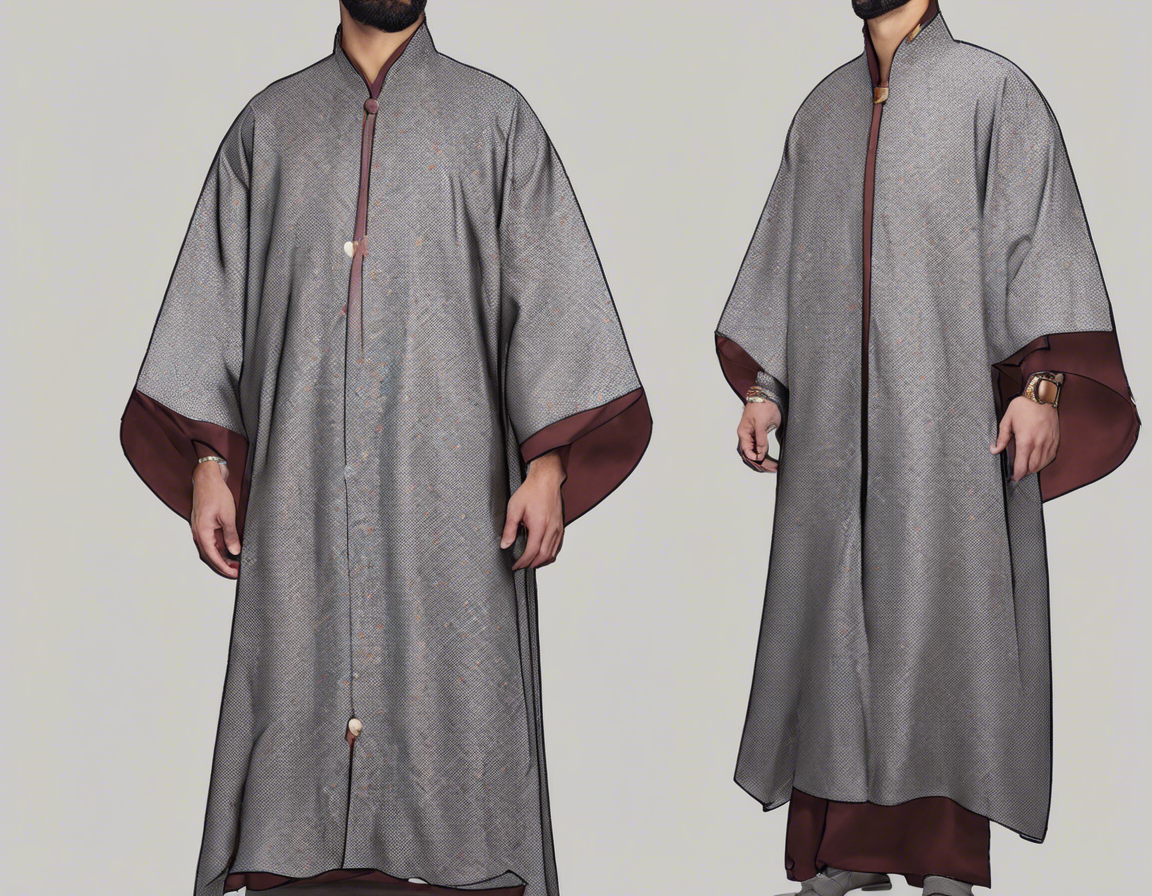Clothing has played a significant role in human history, reflecting not only personal style but also social status, tradition, and culture. One such garment that stands out for its timeless elegance and regal charm is the bisht. Originating from the Arab world, the bisht is a cloak that has been worn for centuries by rulers, dignitaries, and aristocrats, symbolizing power, prestige, and sophistication. Let’s delve into the captivating history, cultural significance, and modern-day appeal of this majestic garment.
History of the Bisht
The bisht has a long and storied history, tracing its roots back to the Arabian Peninsula. Initially worn by Bedouin tribes in the harsh desert environments, the bisht served as protection from the elements, with its thick fabric offering warmth and insulation. Over time, the garment evolved from a practical necessity to a symbol of wealth and authority, adopted by nobles and rulers across the region.
Construction and Design
The bisht is typically crafted from luxurious materials such as wool, cashmere, or silk, with intricate embroidery and embellishments adorning the fabric. It is characterized by its loose, flowing silhouette, with wide sleeves and a length that drapes elegantly over the shoulders and down to the ankles. The most distinctive feature of the bisht is its decorative edging, which is often embellished with intricate patterns and fine craftsmanship.
Cultural Significance
In Arab culture, the bisht holds great symbolic value and is often reserved for special occasions and formal events. Wearing a bisht is a mark of respect, honor, and dignity, and it conveys a sense of tradition and heritage. It is commonly worn by groomsmen at weddings, dignitaries at official ceremonies, and leaders during important gatherings. The bisht embodies a sense of grace and authority that transcends time and cultural boundaries.
Modern Interpretations
In recent years, the bisht has experienced a revival in the world of high fashion, with designers and tastemakers reimagining this classic garment for contemporary audiences. Celebrities, influencers, and fashion enthusiasts have embraced the bisht as a statement piece, incorporating it into their wardrobes for red carpet events, galas, and exclusive soirees. Its versatility and sophistication make it a coveted item for those seeking to make a bold and elegant fashion statement.
Styling the Bisht
The bisht can be styled in a variety of ways to suit different occasions and personal tastes. For a formal look, pair it with tailored trousers, a crisp shirt, and polished dress shoes. For a more casual vibe, layer the bisht over a simple t-shirt and jeans for a touch of effortless sophistication. Accessorize with a statement belt or traditional Arab headdress for an added touch of flair.
Care and Maintenance
To ensure your bisht retains its pristine appearance and quality, it is essential to give it proper care and attention. Dry cleaning is often recommended for delicate fabrics such as cashmere or silk. Store your bisht in a cool, dry place away from direct sunlight to prevent damage and discoloration. Avoid folding or hanging the bisht on sharp edges to prevent snagging or stretching of the fabric.
FAQs about the Bisht:
Q: What is the difference between a bisht and a thobe?
A: While both garments are traditional Arab attire, the bisht is a cloak worn over clothing, while the thobe is a long tunic or robe that is worn as the primary garment.
Q: Can women wear a bisht?
A: Yes, women can wear a bisht, and there are modern interpretations of the garment designed specifically for female wearers.
Q: What colors are commonly found in a bisht?
A: Traditional bishts are often black, brown, or white, but contemporary versions can be found in a wide range of colors and patterns.
Q: Is the bisht only worn in the Arab world?
A: While the bisht has its origins in the Arab world, it has gained popularity globally as a symbol of elegance and sophistication.
Q: Are there different styles of bisht for different occasions?
A: Yes, there are variations of the bisht that range from simple and understated for everyday wear to elaborate and ornate for special events and ceremonies.
The timeless allure of the bisht lies in its rich history, cultural significance, and unmatched elegance. Whether worn for a formal affair or to make a fashion statement, the bisht embodies a sense of grandeur and prestige that transcends trends and fads. Embrace the regal charm of this iconic garment and step into a world of sophistication and style.
